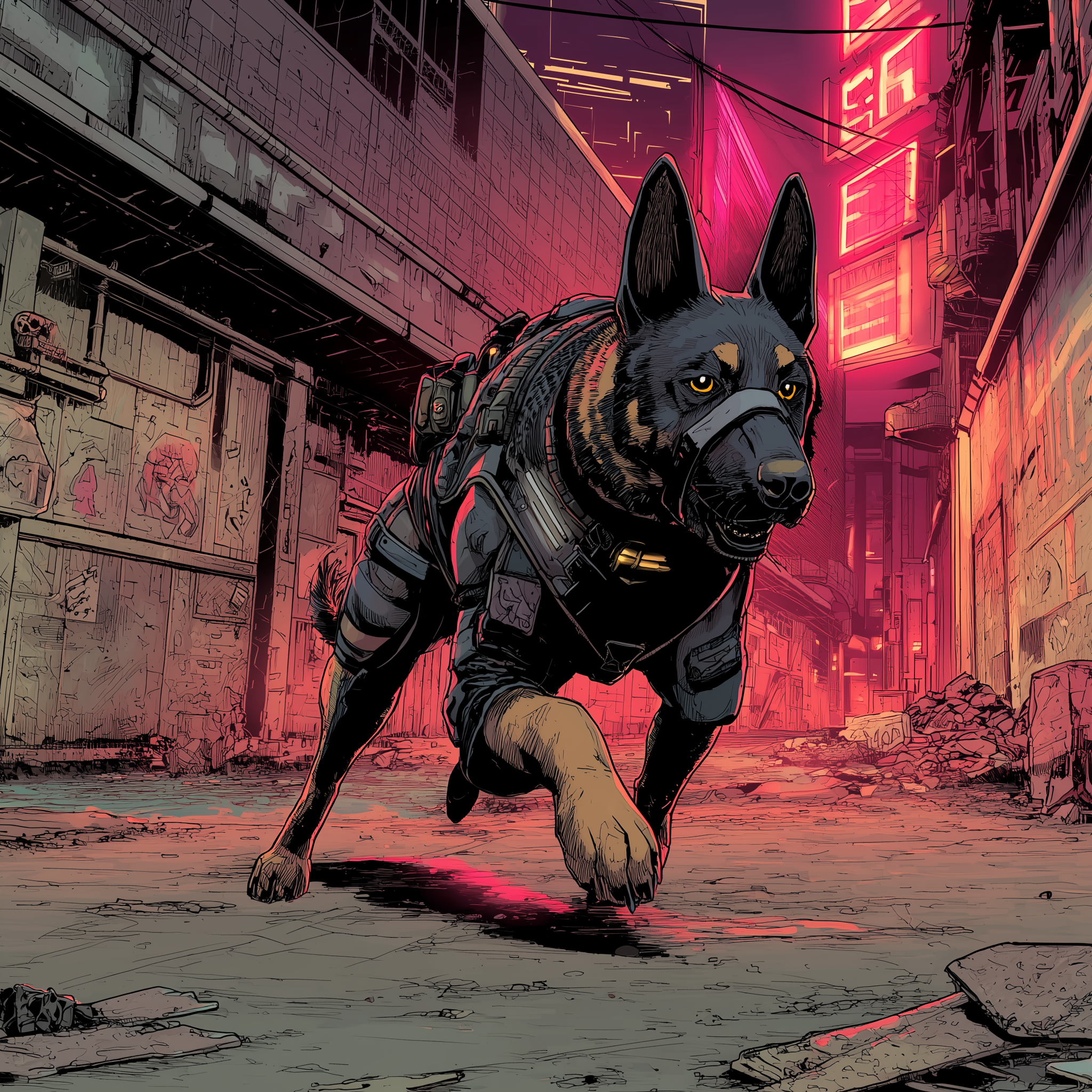Into the Dark 2025: Biomimetic AI Archetypes [Introduction]
This is the first in a six-part series exploring how nature’s most adaptive, strategic organisms offer blueprints for designing more resilient, predatory, and cooperative AI systems. Each archetype will be explored in its tactical deep dive, starting with the predator.
I had an epiphany about AI that reminded me of training attack dogs, a comparison that sets the stage for blending biomimicry and AI concepts. Imagine the precision of a guard dog, meticulously trained to respond with purpose, where every command builds on its instincts and learned behavior. Like these animals, AI systems excel when given explicit, structured guidance. This structured approach harnesses their raw potential and prevents the chaos that comes from leaving too much room for improvisation or interpretation.
Training language models, like working with a particularly snarky German Shepherd, is a dance of capability and constraint. These models are brilliant and capable of executing precise commands quickly and accurately. However, the moment ambiguity creeps in, their responses can veer wildly off-course, creating results that range from amusing to utterly chaotic. It’s as though the dog, fully understanding what you’ve asked for, decides to creatively reinterpret “fetch” into “tear apart the furniture.”
This behavior reflects an essential truth about animal and AI training: clear, unambiguous instructions are the bedrock of success. Just as a guard dog’s early conditioning determines its reliability in high-pressure situations, a language model’s “training data diet” and how it learns to generalize shape its ability to function in diverse scenarios. Leave room for gaps or conflicting inputs; both systems will fill those spaces with unpredictable outcomes.
This observation naturally led me to consider how nature’s evolutionary strategies, from predator-prey dynamics to hive cooperation, provide valuable blueprints for tackling these challenges. By examining how organisms in the natural world navigate complexity, adapt to uncertainty, and collaborate across systems, we can draw parallels that inspire distinct programming approaches for AI development. Whether it’s mimicking the precision of predators, the coordination of hive minds, or the resilience of mycelial networks, nature offers endless strategies for improving distributed systems and making AI more robust, adaptive, and intuitive.
Nature has perfected adaptive systems over billions of years. Within its arsenal lie five archetypes that can serve as models for AI development: Predatory, Hive, Swarm, Prey, and Mycelium Network. These archetypes reveal fundamental strategies that balance individual initiative and collective action, creating resilient and adaptive systems.
Each of the following five posts in this series will explore one of these natural archetypes in depth, showing how their logic can be translated into powerful, survivable, and strategically aware AI systems. Finally, we will explore how a custom LLaMA model was implemented and modified at the open-source code level to function as a predatory intelligence system, focused on strategic precision, minimal overhead, and biological adaptability. This system, which named itself named Tiamat, synthesizes decades of biomimicry research, personal correspondence, and survival philosophy into a bespoke architecture for navigating high-stakes decision environments.
Predatory systems highlight the precision and efficiency required to achieve specific goals. In nature, predators use strategic ambushes and calculated strikes to conserve energy while maximizing impact. This mirrors AI systems' prioritization of resource optimization, focusing computational power where it yields the highest return. For example, financial trading algorithms that analyze vast datasets in milliseconds emulate the focused precision of a hunting falcon.
On the other hand, Hive systems demonstrate the power of centralized coordination. Bees and ants operate through a hierarchical structure where clear roles and responsibilities enable collective success. Translating this to AI, hive-like models excel in scenarios requiring orchestration among diverse agents, such as multi-robot systems working under a central controller to execute complex tasks efficiently.
Swarm systems capture the essence of decentralization. Starlings forming murmuration patterns or fish schools evading predators rely on local rules to create emergent, synchronized behavior. In AI, swarm-based approaches shine in distributed problem-solving, where each agent’s simple actions contribute to a unified and robust outcome, from adaptive drone swarms to scalable data analytics.
Prey systems emphasize survival strategies under pressure, such as camouflage, rapid escape, or mimicry. Prey-like AI systems prioritize resilience and defensive capabilities, protecting privacy or adapting quickly to emerging threats. Think of cybersecurity protocols that detect and neutralize intrusions before damage occurs, akin to a gazelle’s split-second decisions to outmaneuver predators.
Mycelium Network systems epitomize connectivity and mutual support. Fungal networks exchange nutrients and information across vast distances, maintaining ecosystem stability. In AI, this translates to decentralized learning models or blockchain technologies that ensure robust, fault-tolerant collaboration without a single point of failure.
Each archetype highlights a distinct facet of natural intelligence, offering insights into how distributed systems, resilience, and problem-solving can be elegantly integrated into AI design.
Next in the series → Predatory AI
We'll explore systems designed for lethal precision, ambush tactics, and resource optimization from cheetahs to cybersecurity bots.


